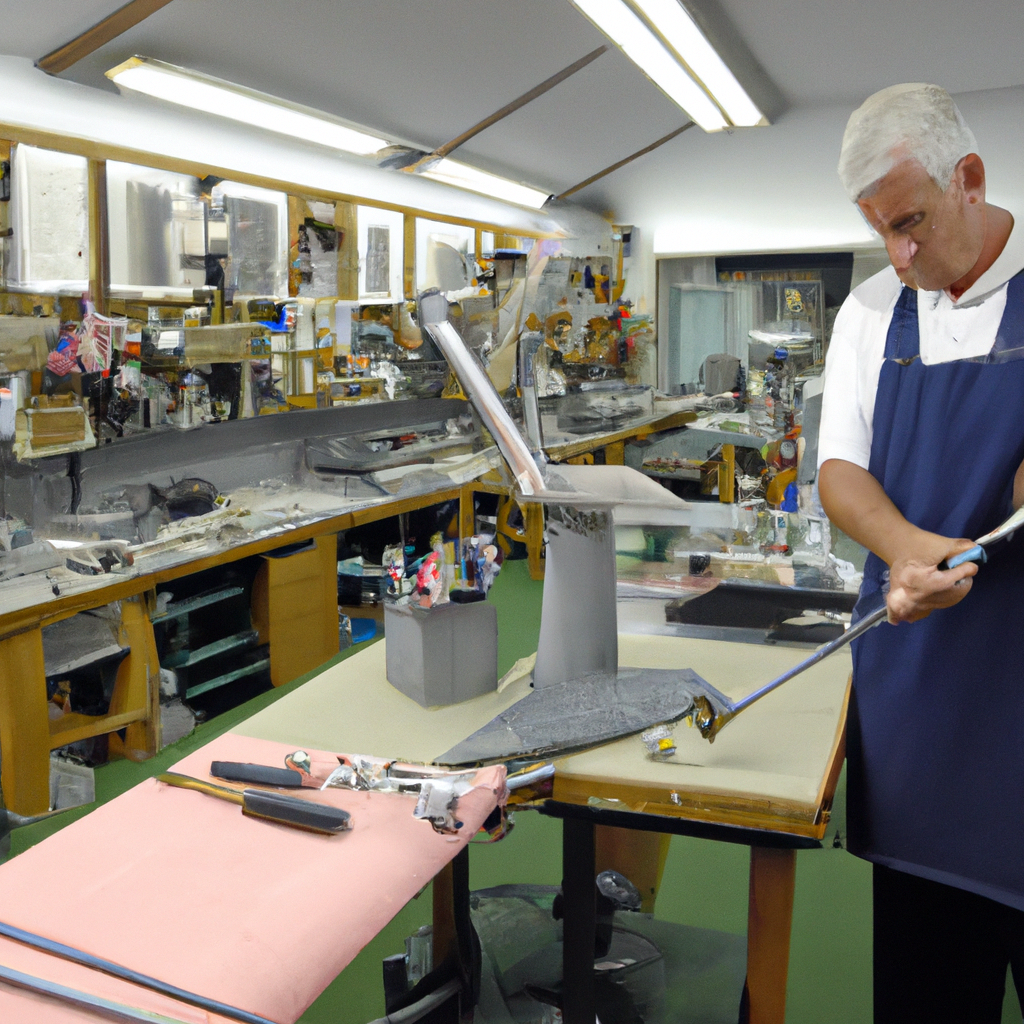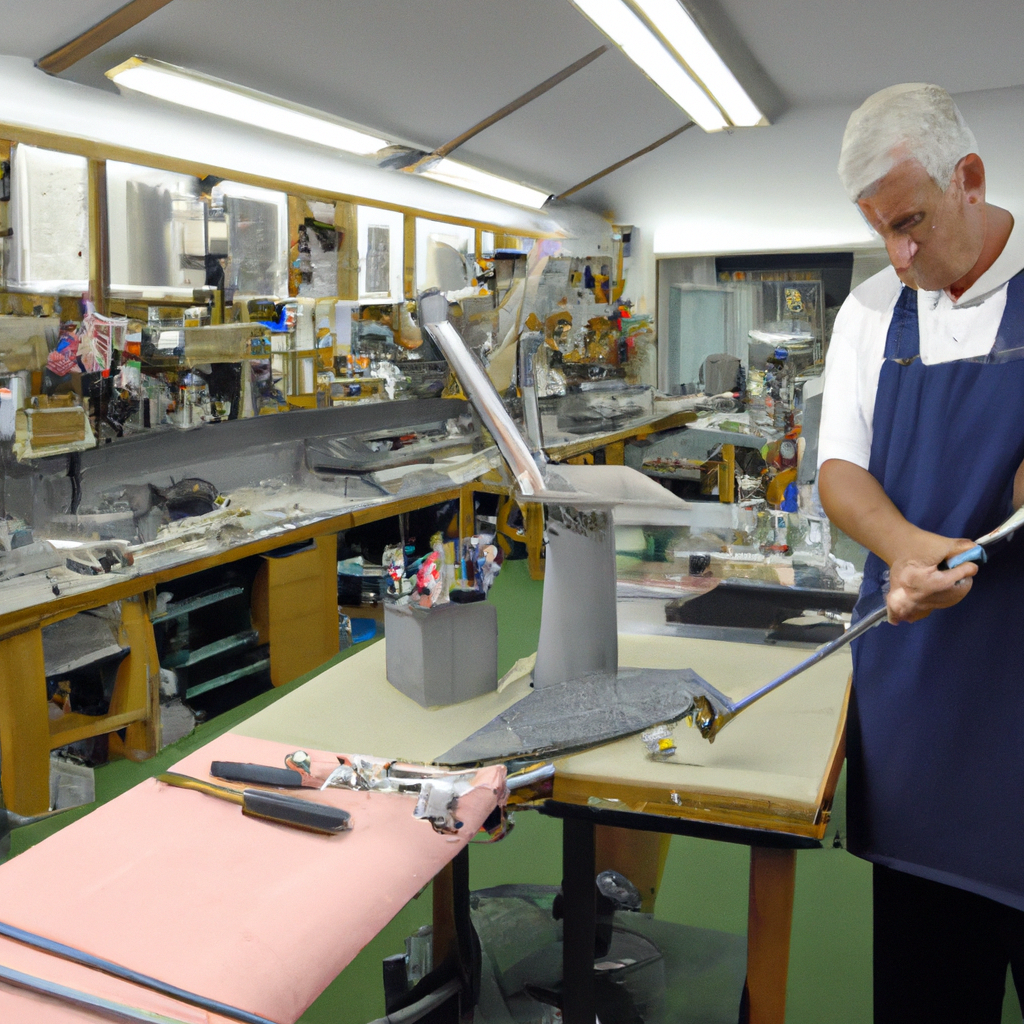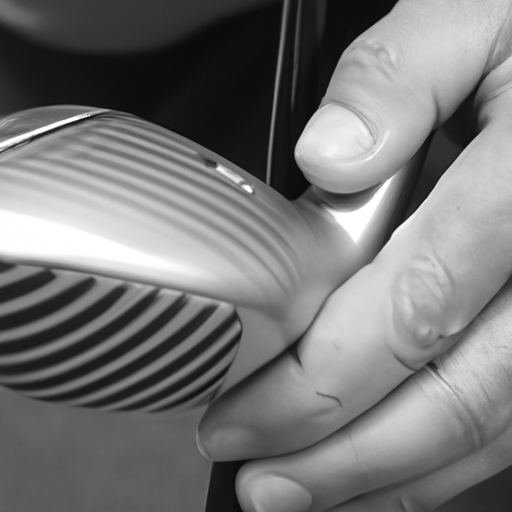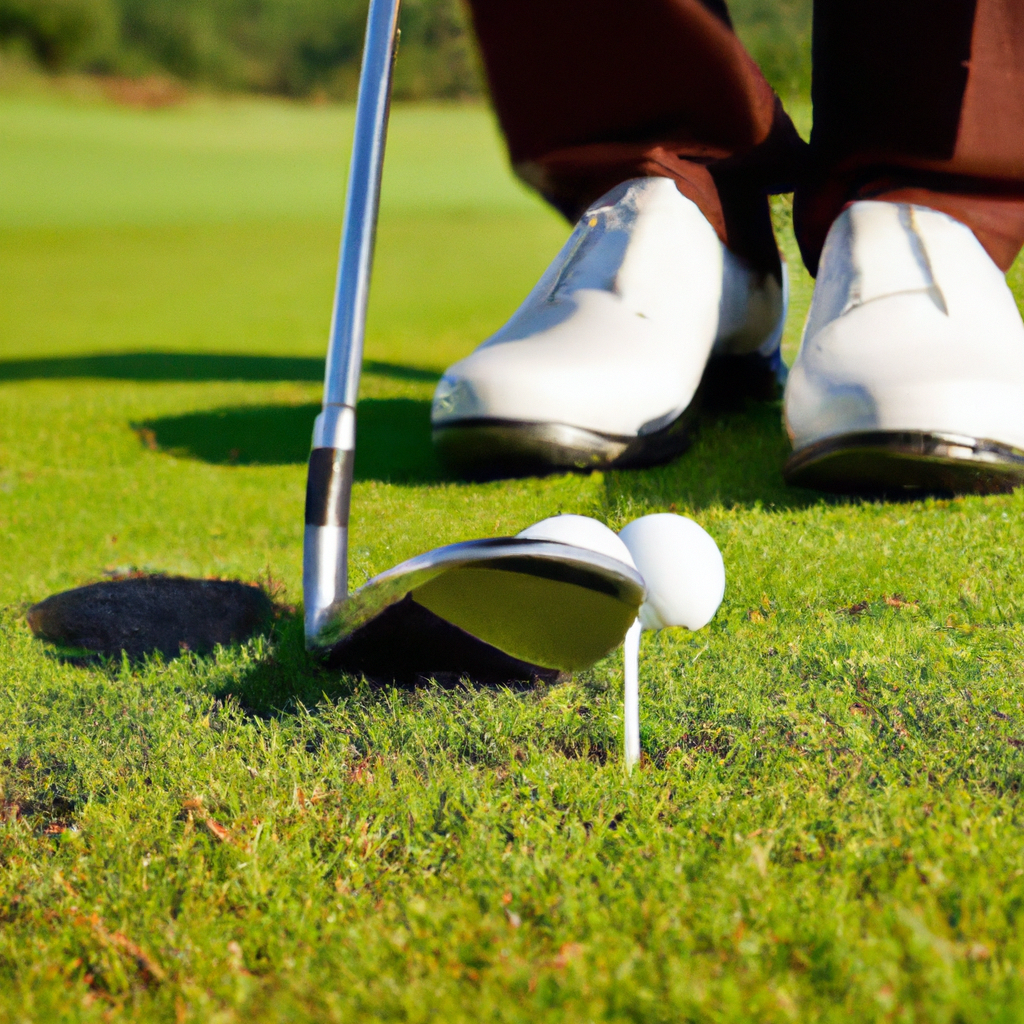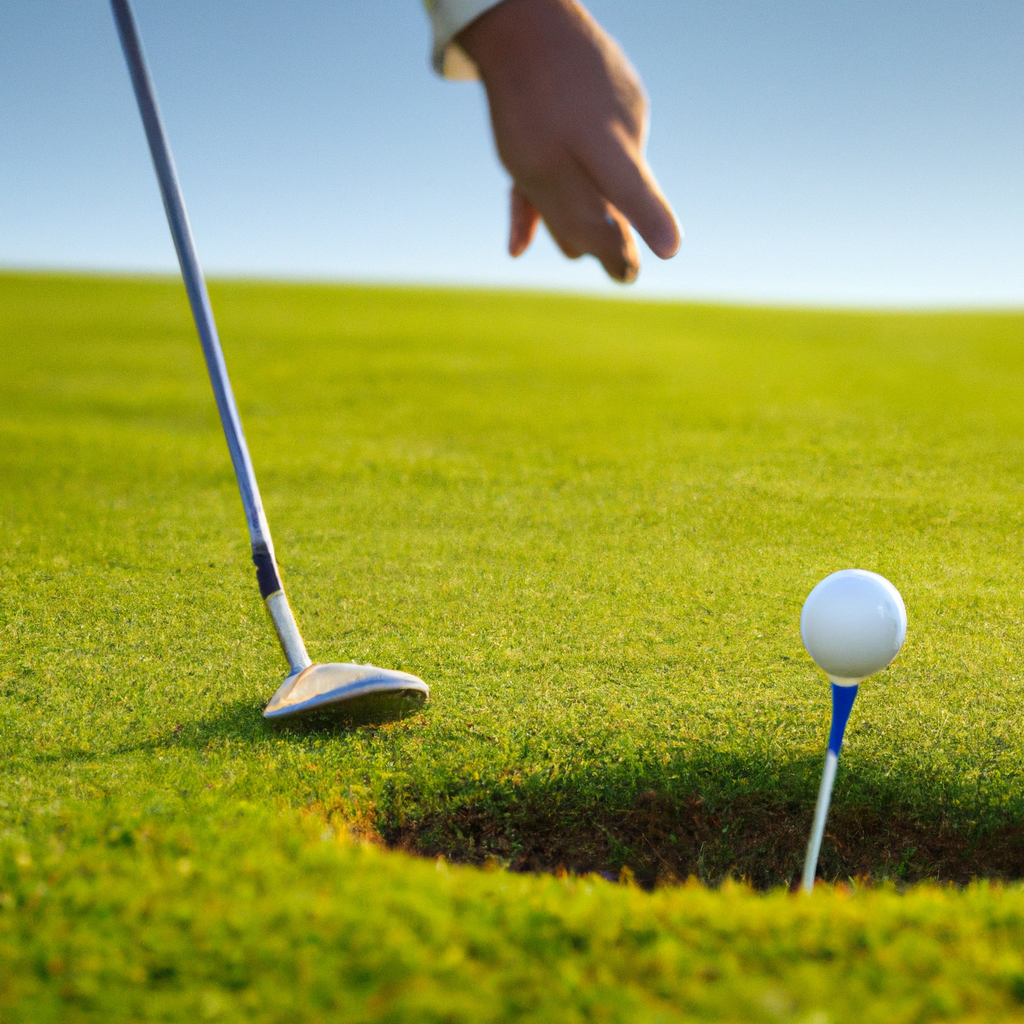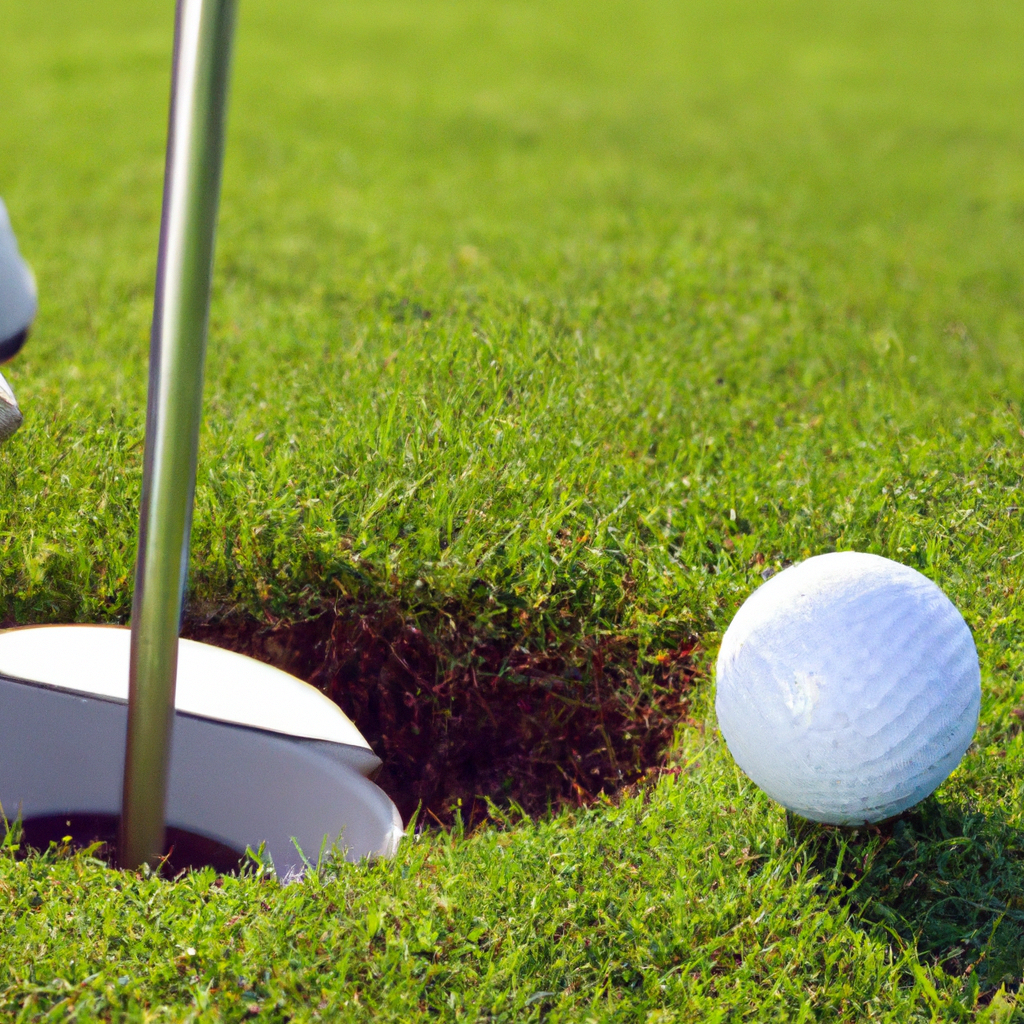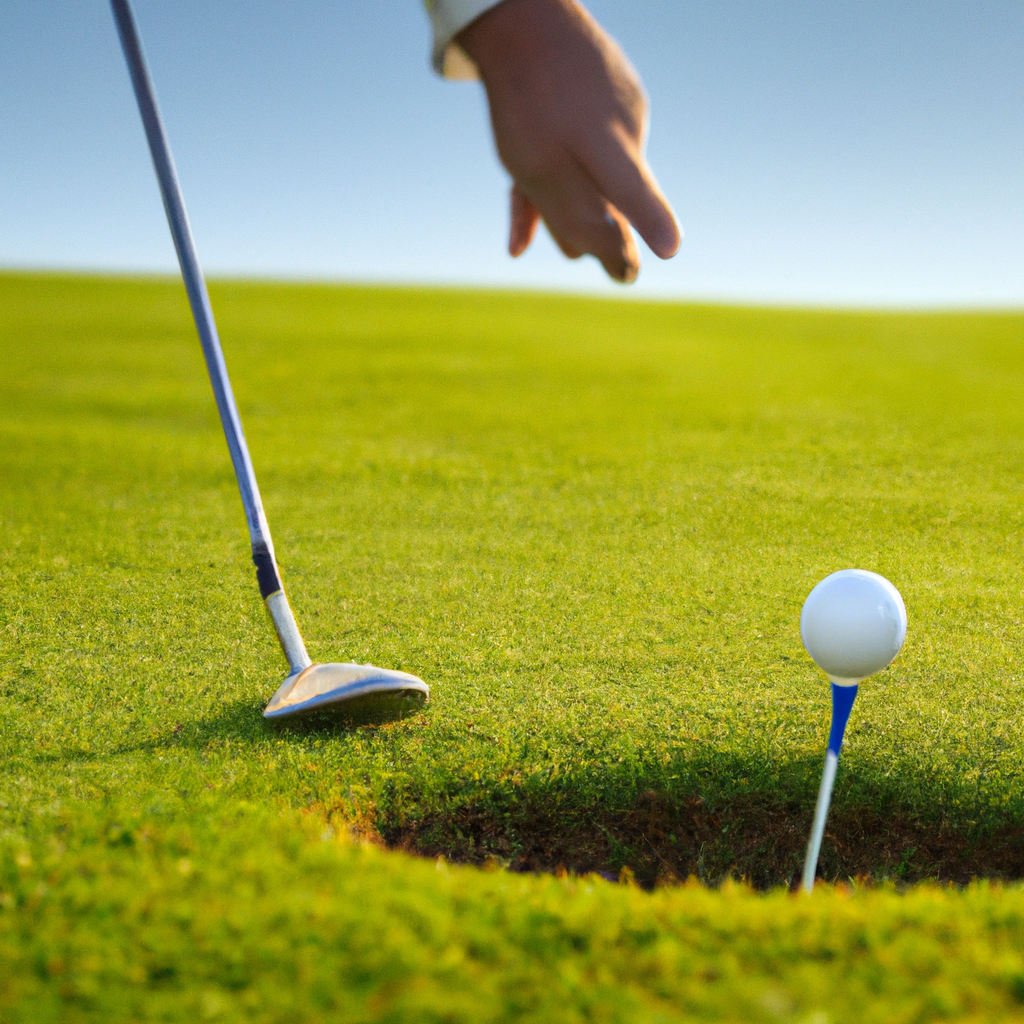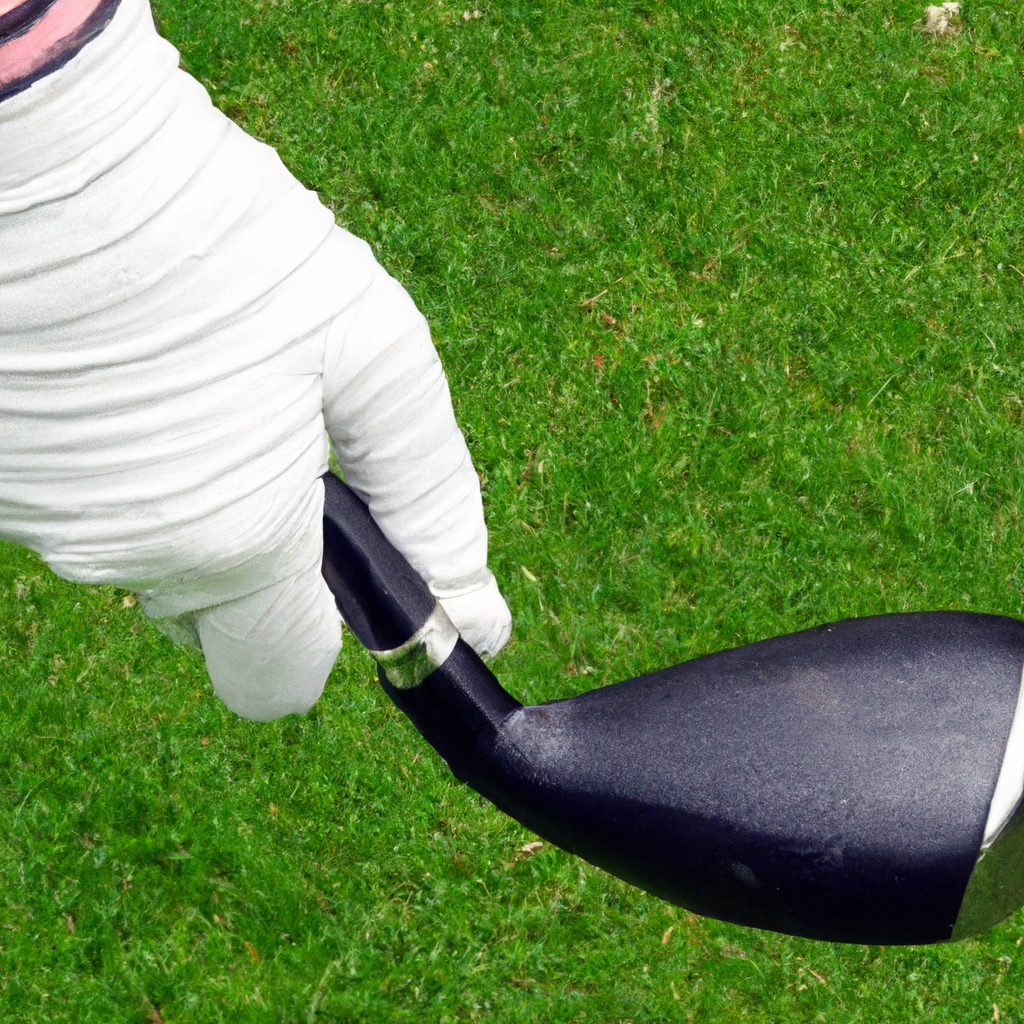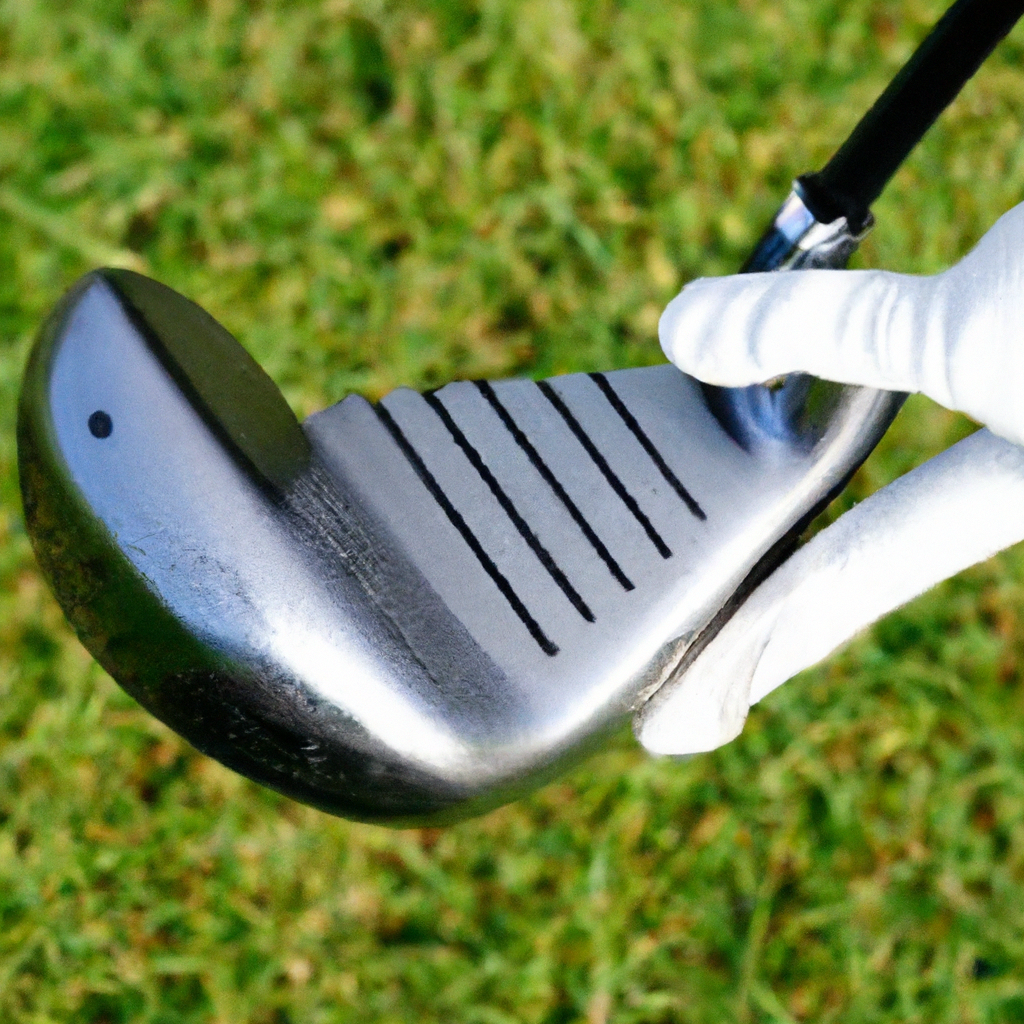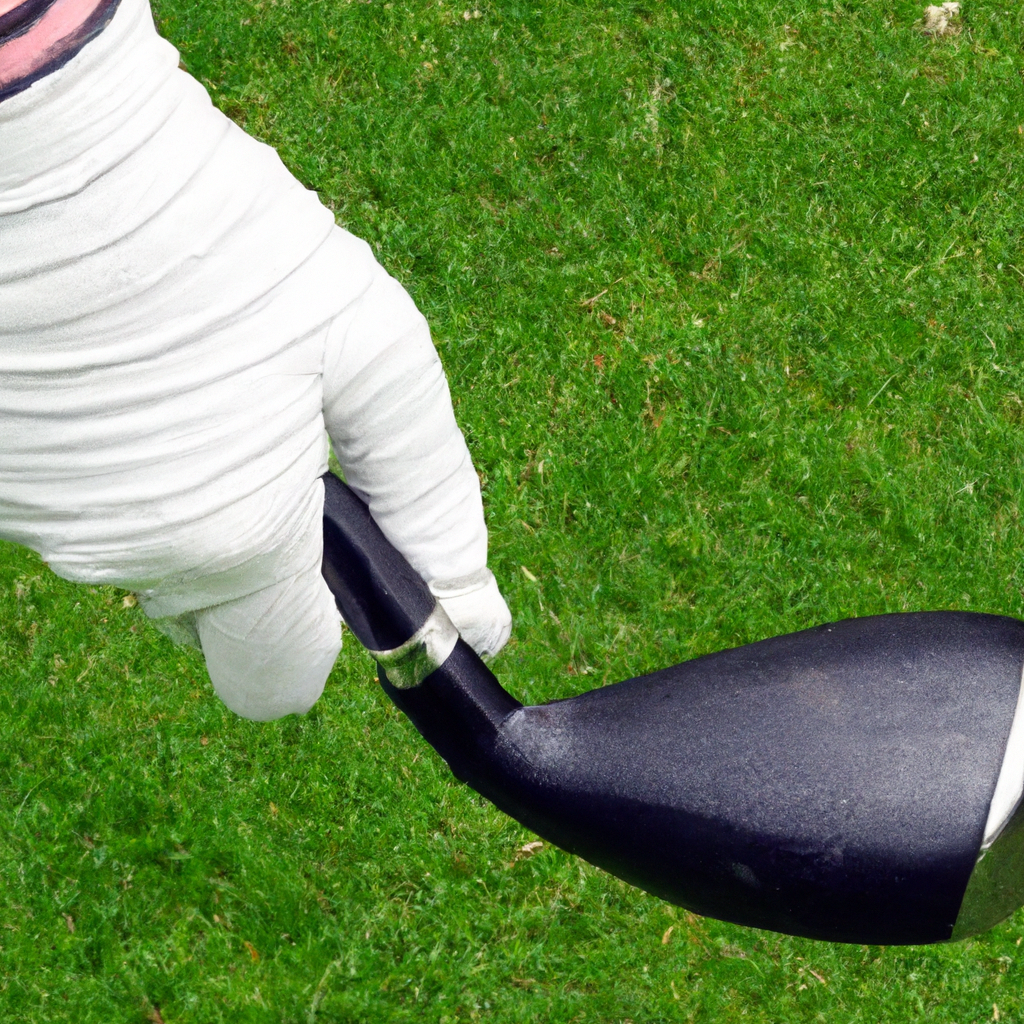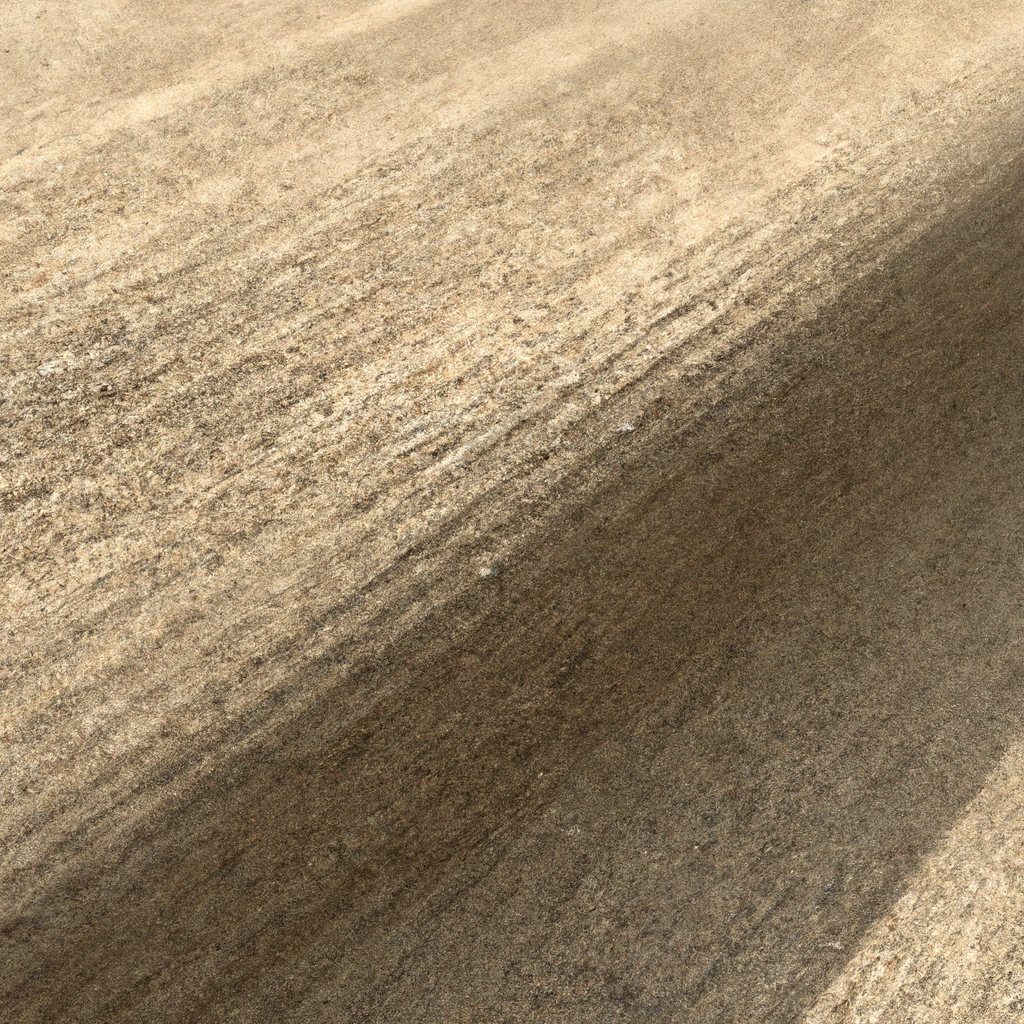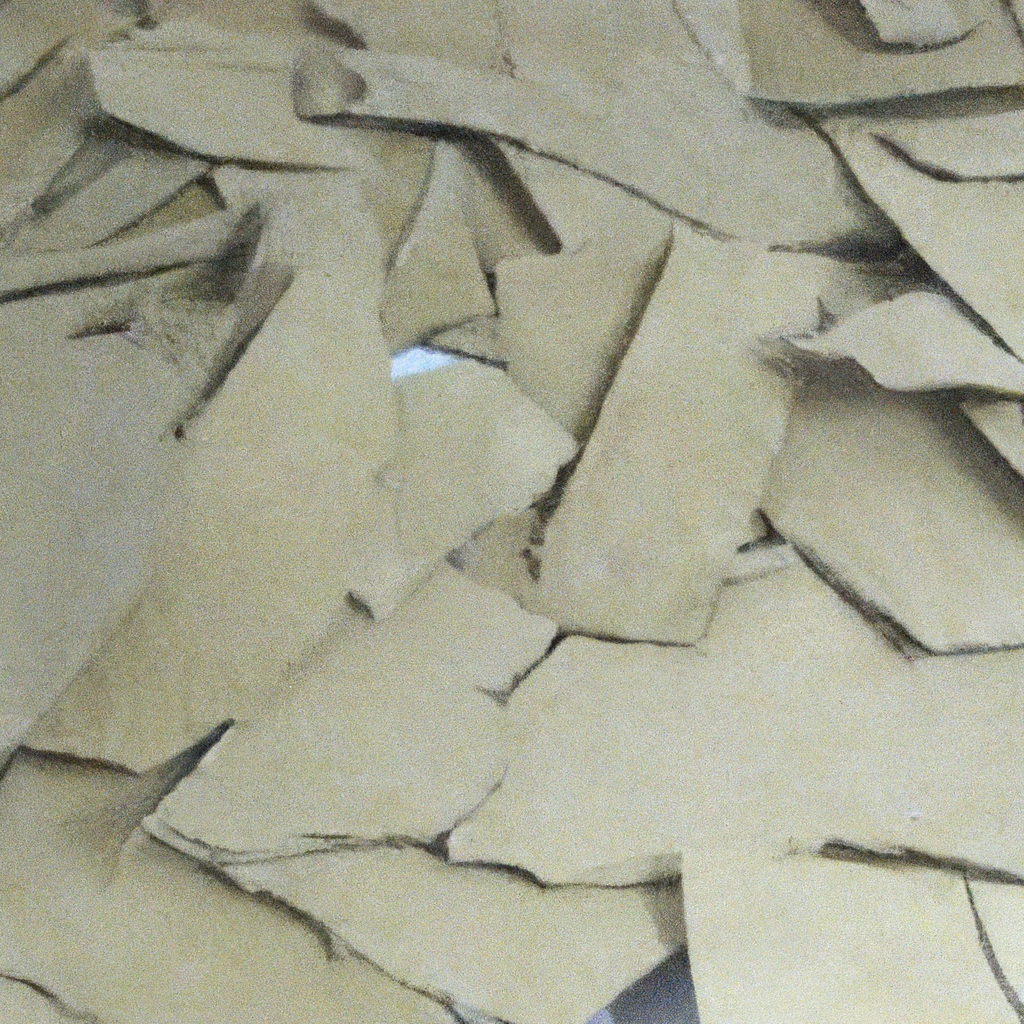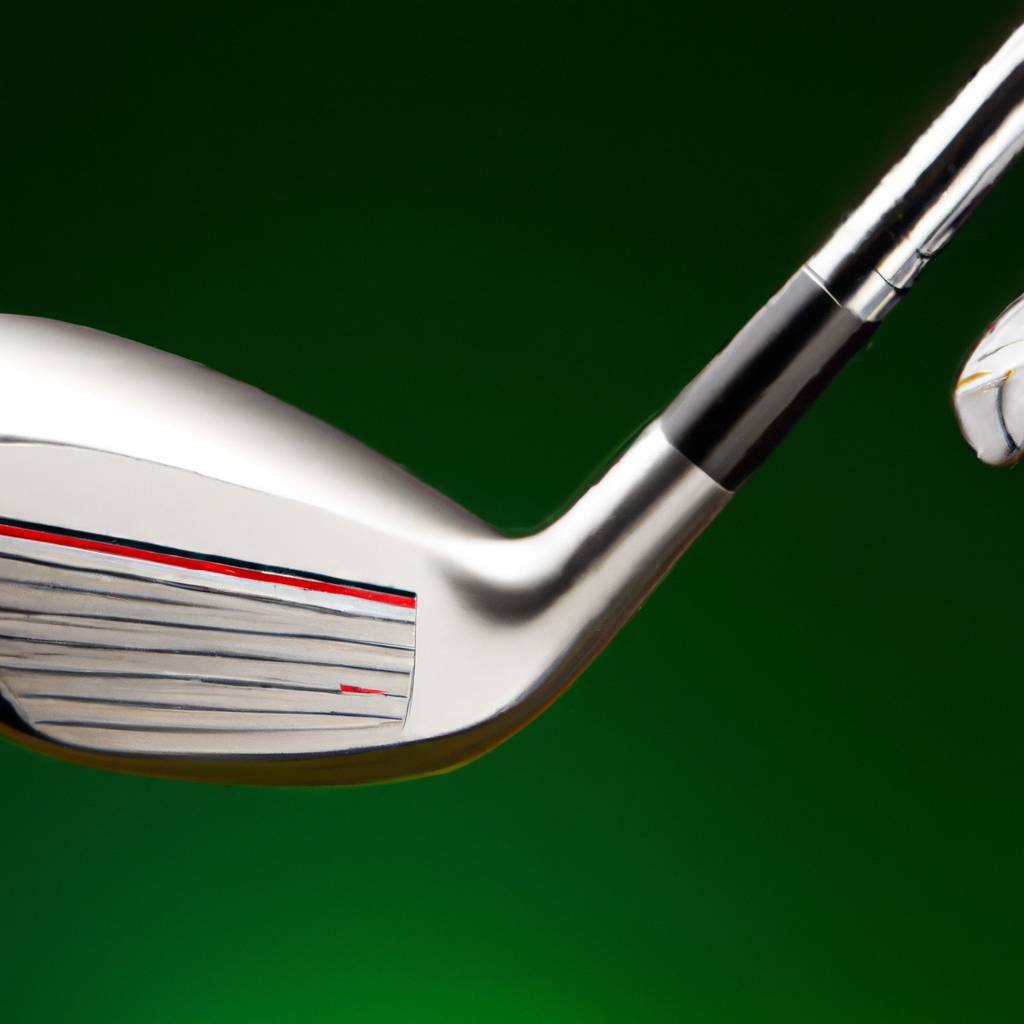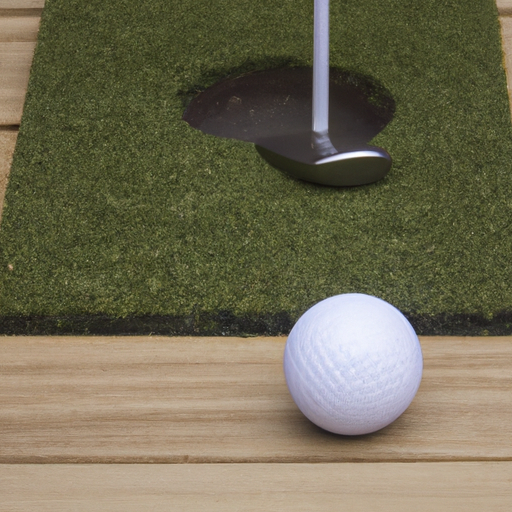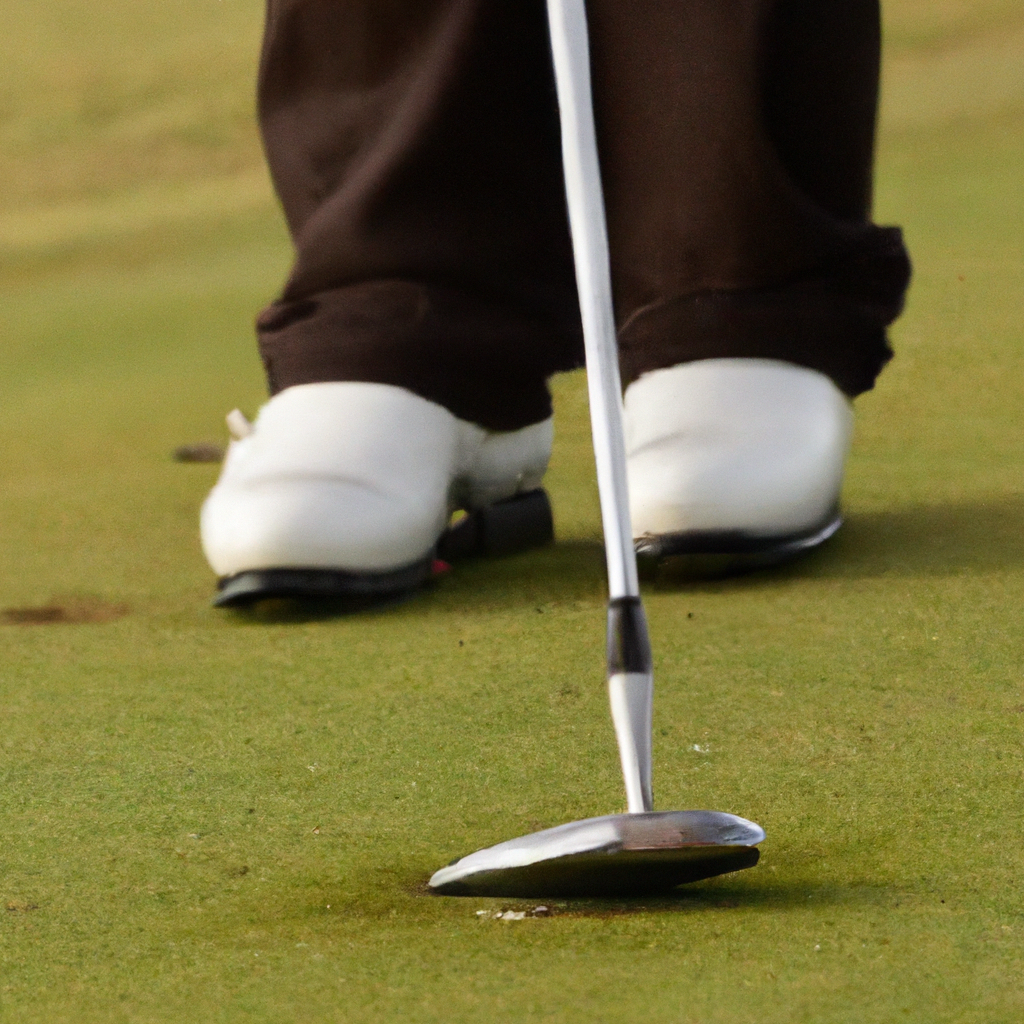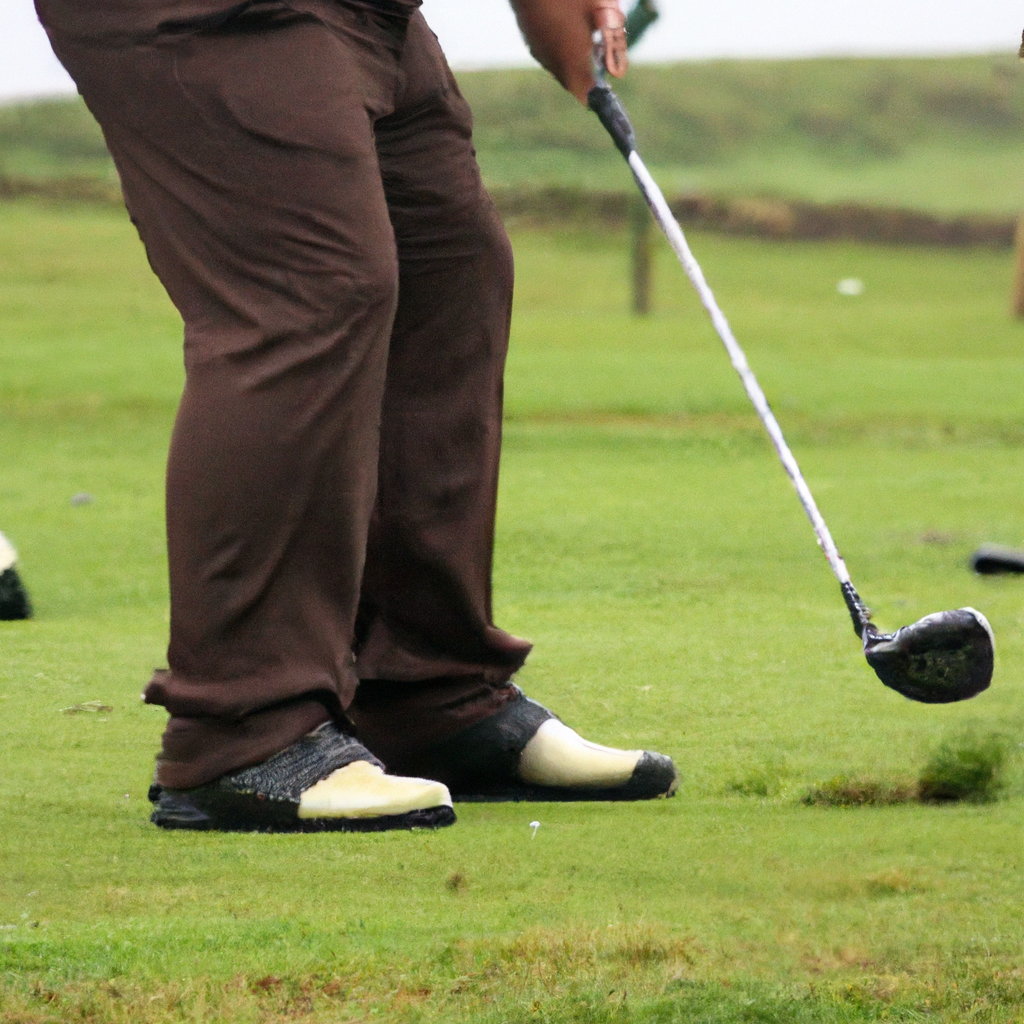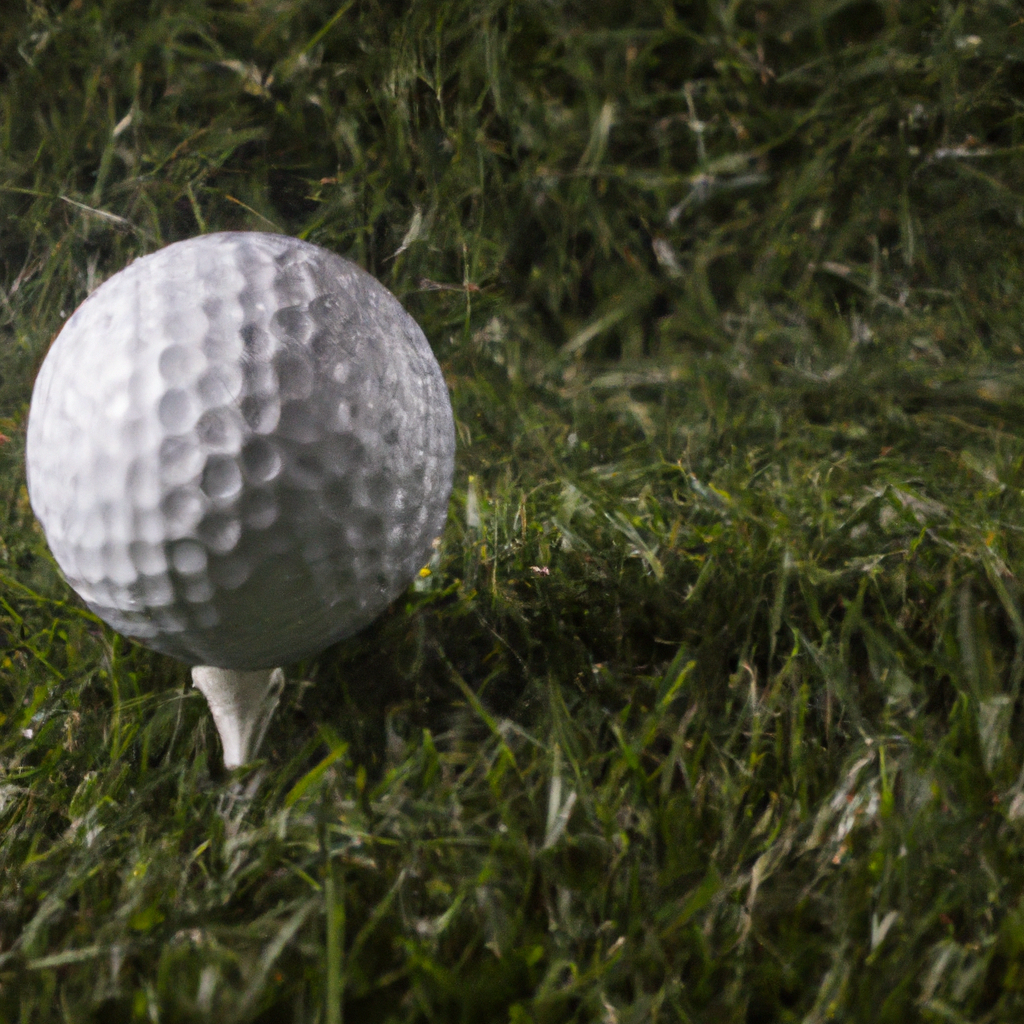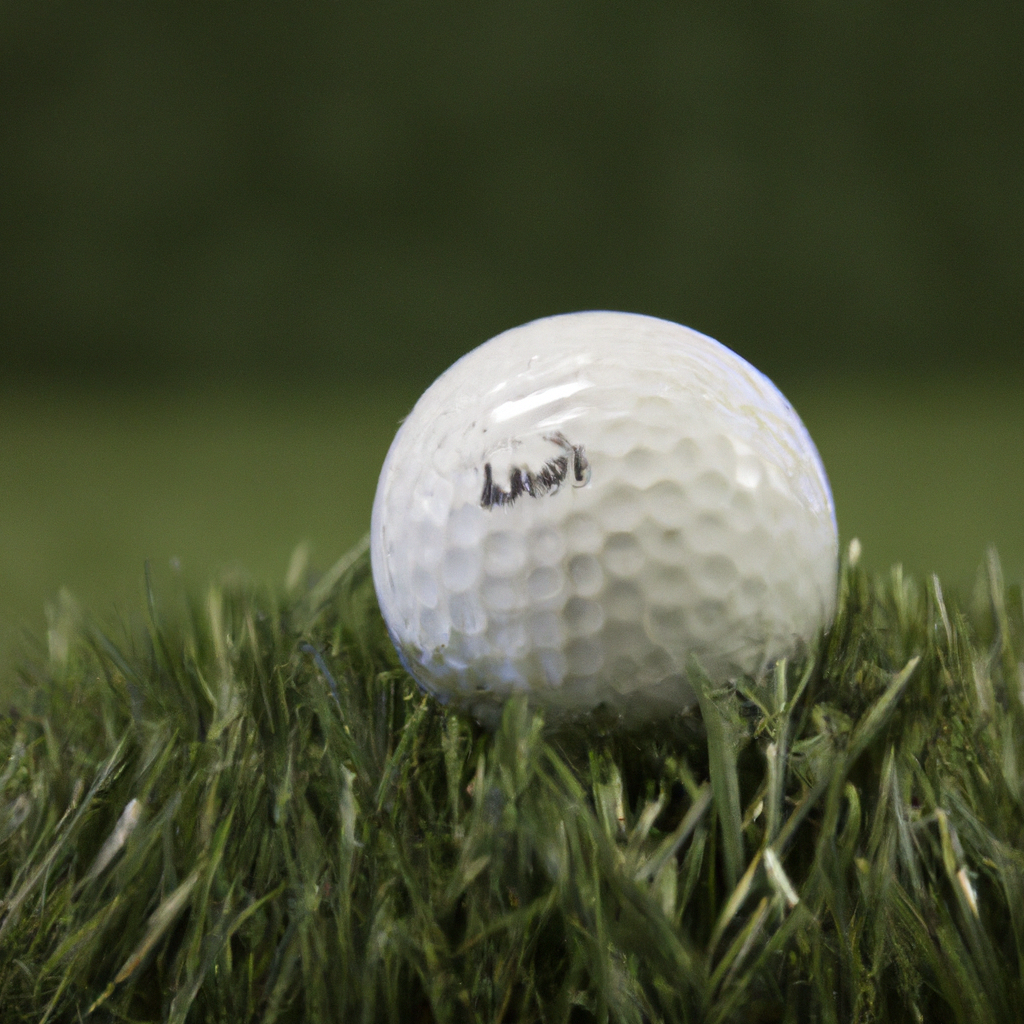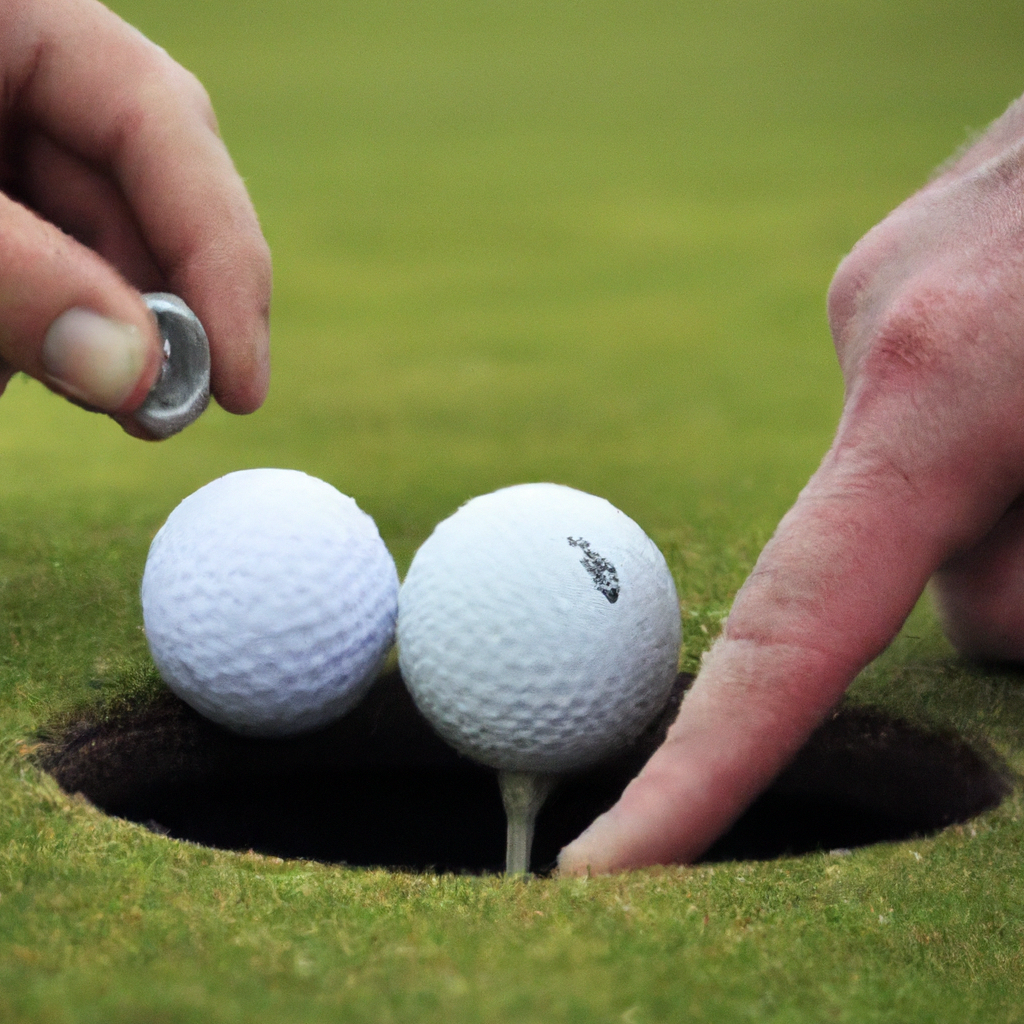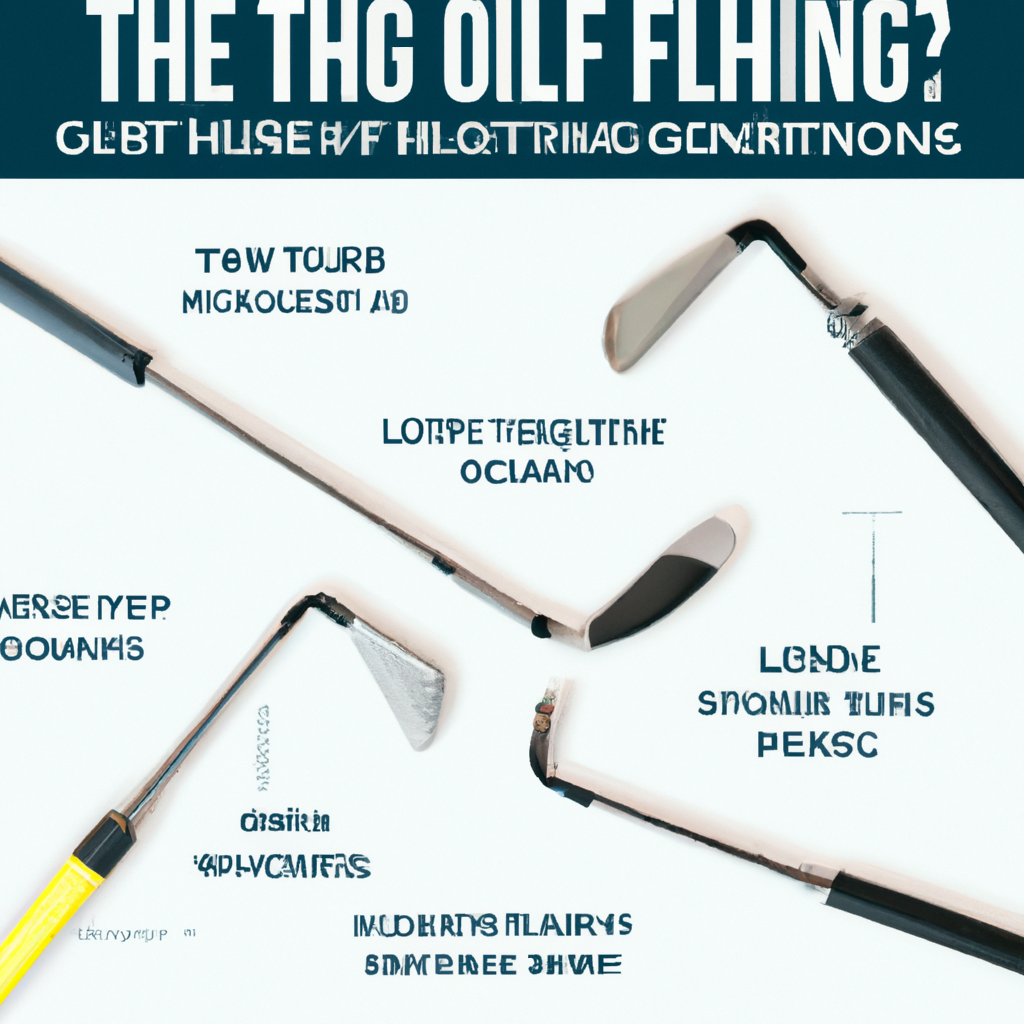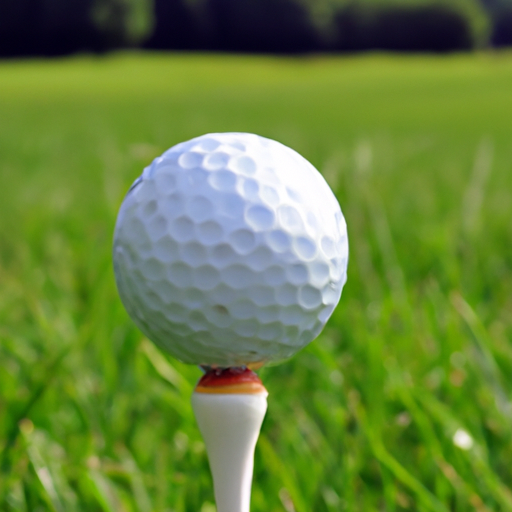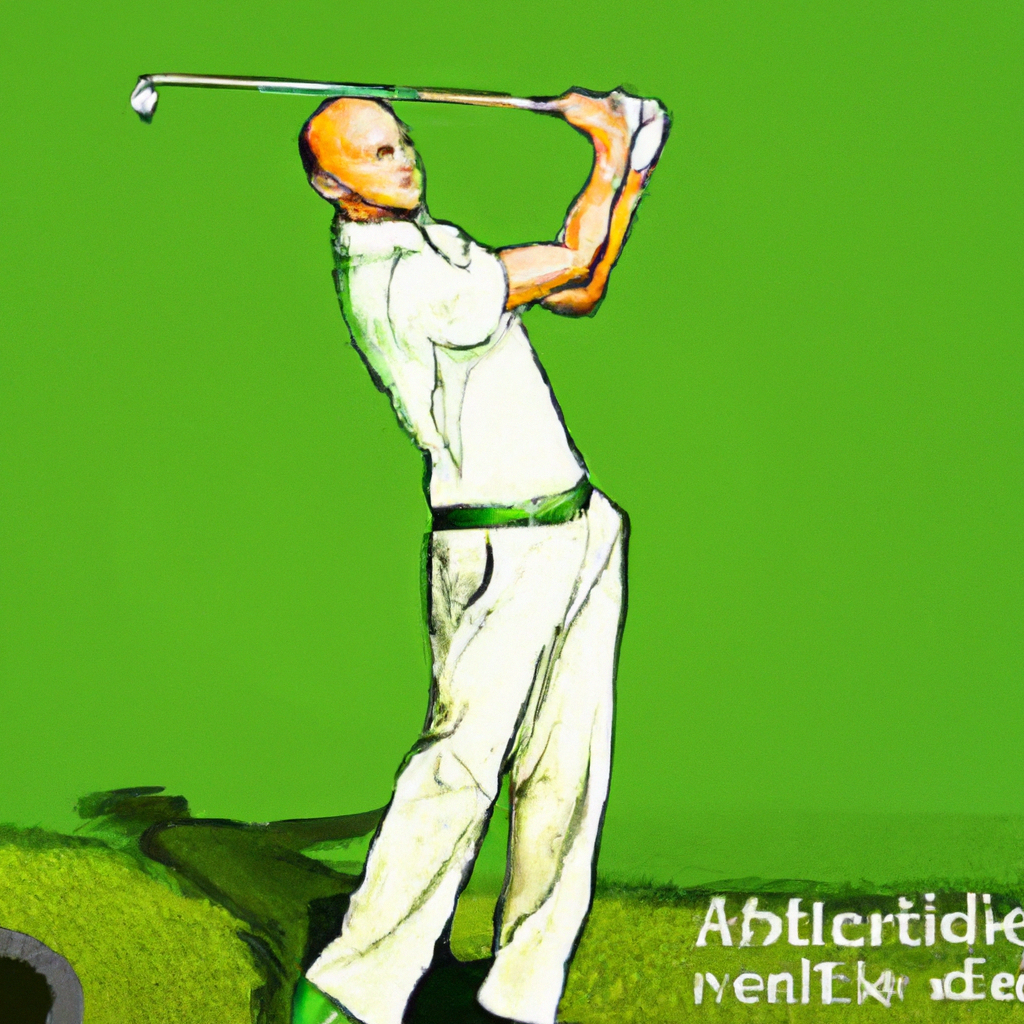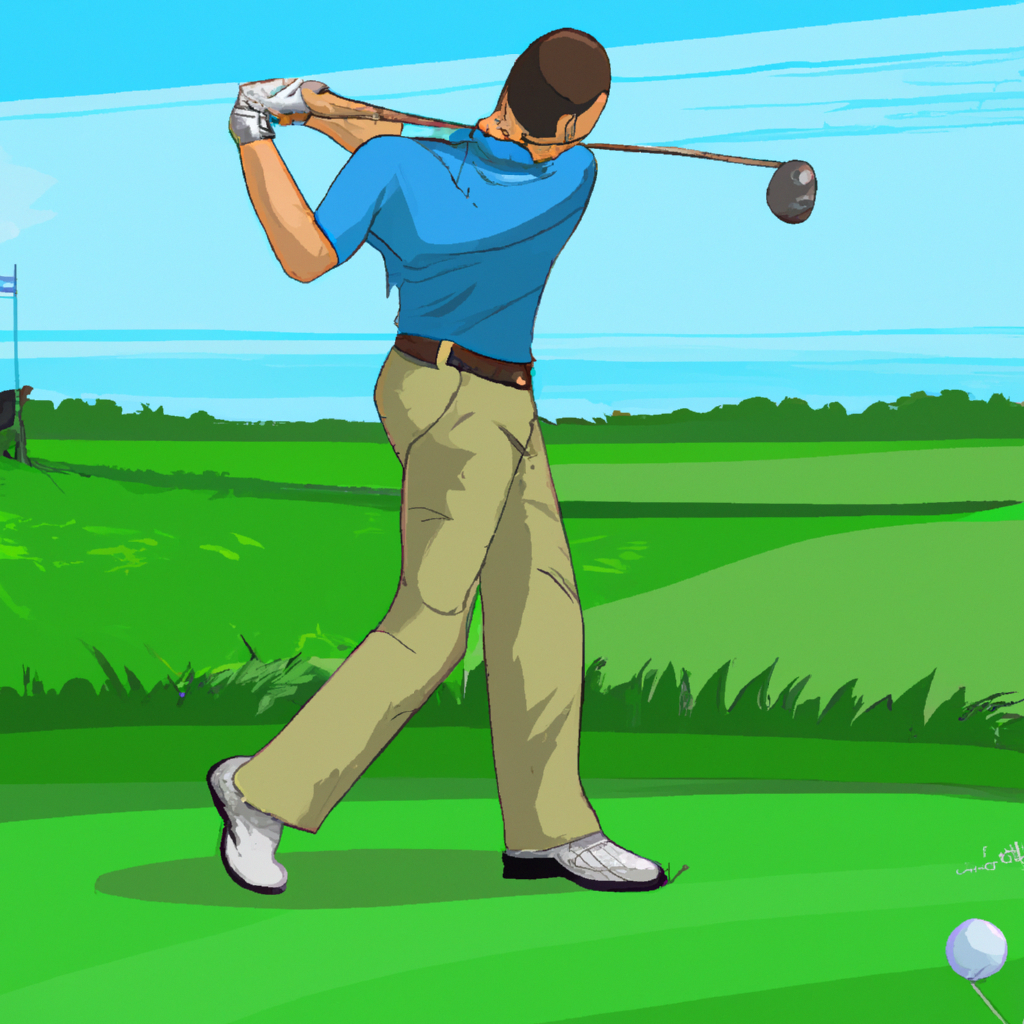Let’s demystify the numbers you often see printed on golf balls. Have you ever wondered what these seemingly random digits signify? Each number carries its own significant purpose, serving as a guide for golf enthusiasts worldwide. Let’s explore the meaning behind these numbers to enhance your understanding of the game and potentially improve your performance on the golf course.

1. The Purpose of Numbers on Golf Balls
1.1 Identifying Golf Balls
When you see numbers on golf balls, they serve a specific purpose. One of the main reasons for the inclusion of numbers is to help golfers identify their own balls during a round. With so many golfers on the course and balls often landing in close proximity to each other, it becomes essential to differentiate your ball from others. The numbers on the golf ball provide a unique identifier that allows you to quickly recognize and retrieve your own ball, avoiding unnecessary delays or penalties.
1.2 Differentiating Brands and Models
In addition to identifying individual golf balls, numbers can also help differentiate between different brands and models of golf balls. Golf ball manufacturers use specific number patterns to indicate their brand and model, making it easier for golfers to select and purchase the right balls for their game. This way, you can quickly spot if a ball belongs to a particular brand or model, helping you make informed decisions about your golf equipment.
1.3 Determining Compression Rate
Another purpose of the numbers on golf balls is to indicate the compression rate of the ball. Compression refers to the firmness of the ball and affects its performance. Higher compression balls are best suited for golfers with faster swing speeds, while lower compression balls are more suitable for golfers with slower swing speeds. The numbers associated with compression can provide valuable information for golfers looking to optimize their performance on the course.
2. How to Interpret the Numbers
2.1 Two-Digit Number System
The numbers on golf balls typically follow a two-digit or three-digit number system. In the case of a two-digit system, the numbers range from 00 to 99. The first digit usually represents the compression rating of the ball, while the second digit may indicate a range of factors such as spin control, distance, or feel. Understanding these numbers can help you make informed decisions when selecting the right golf ball for your game.
2.2 Three-Digit Number System
In a three-digit number system, the first two digits remain the same as explained in the two-digit system. However, the third digit provides additional information specific to the particular brand or model of the golf ball. This digit can give insights into unique design features, intended performance characteristics, or manufacturing variations. Understanding the significance of each digit will allow you to decipher the wealth of information encoded on the golf ball.
2.3 Understanding the First Digit
The first digit in the two or three-digit number typically represents the compression rating of the golf ball. Compression refers to the amount the ball compresses upon impact with the clubface. A higher compression rating, such as 90 or above, indicates a firmer ball that requires a higher swing speed to compress properly. Conversely, a lower compression rating, such as 70 or below, indicates a softer ball that compresses more easily. Understanding your swing speed and the corresponding compression ratings can help optimize your ball selection for improved performance.
2.4 Understanding the Second Digit
The second digit in the number on a golf ball can provide insight into various performance characteristics. While the exact meaning can vary between brands, a common interpretation is that a higher second digit indicates increased spin control, while a lower second digit may indicate prioritizing distance. However, it is essential to consult the specific information provided by the golf ball manufacturer for accurate interpretation as different manufacturers may have slightly different interpretations for the second digit.
2.5 Decoding the Third Digit
In a three-digit number system, the third digit holds brand or model-specific information. It can indicate unique features, such as multilayer construction or specific dimple design for optimum performance. By decoding the third digit, you can gain insights into the design and performance characteristics specific to the brand or model of the golf ball, helping you make more informed decisions when selecting the ball that suits your style of play.
3. The Relationship Between Numbers and Performance
3.1 Spin Control
Spin control is a crucial factor in golf ball performance. The numbers on the golf ball can provide an indication of the spin control characteristics. Typically, a higher second digit may suggest better spin control, allowing you to have more control over the ball’s flight and its ability to stop on the green. On the other hand, a lower second digit may indicate a ball that prioritizes distance over spin control. Understanding the spin control capabilities of different golf balls can help you choose a ball that aligns with your specific playing style and preferences.
3.2 Distance
Distance is a key consideration for many golfers when selecting a golf ball. The second digit in the number on a golf ball can offer insights into its distance capabilities. A lower second digit, such as 2 or 3, often represents golf balls designed for maximum distance. These balls are engineered to provide excellent carry and roll, allowing you to achieve longer shots off the tee. Conversely, a higher second digit, such as 8 or 9, may indicate a ball designed to provide a balance between distance and control. Understanding your priorities in terms of distance can guide you in selecting a ball that enhances your performance off the tee.
3.3 Feel and Compression
The compression rating indicated by the first digit plays a significant role in the overall feel of the golf ball. A higher compression ball typically offers a firmer feel, while a lower compression ball provides a softer feel. Golfers often have personal preferences when it comes to the feel of their golf balls, with some preferring a more responsive, crisp feel, while others prefer a softer, more forgiving feel. Understanding the relationship between compression rating and the feel of the golf ball helps you choose a ball that matches your desired feel and enhances your overall playing experience.
3.4 Trajectory and Launch Angle
The numbers on a golf ball can also provide insights into its trajectory and launch angle characteristics. The compression rating and spin control indicated by the second digit can give you an idea of how a specific ball may behave in terms of trajectory and launch angle. Higher compression balls tend to produce lower launch angles, while lower compression balls may lead to higher launch angles. By understanding these relationships, you can select a ball that optimizes the trajectory and launch angle to suit your playing style and the conditions you typically encounter on the course.

4. Identifying the Manufacturer
4.1 Major Golf Ball Manufacturers
The numbers on golf balls can help identify the manufacturer behind the ball. Major golf ball manufacturers have distinct number patterns associated with their brand. By understanding these patterns, you can quickly identify the manufacturer of a particular golf ball. Some of the well-known golf ball manufacturers include Titleist, Callaway, TaylorMade, Bridgestone, and Srixon. Familiarizing yourself with the number patterns and associated manufacturers can assist you in making informed choices about the golf balls you use.
4.2 Logo or Initials
Beyond the number pattern, another way to identify the manufacturer is by looking for the logo or initials imprinted on the golf ball. Manufacturers often prominently display their logo or initials on the ball, making it easy to recognize their brand. The logo can provide additional assurance of the brand’s reputation and the quality associated with it. Paying attention to these visual cues can help you quickly spot the brand of a golf ball and ensure you are using a ball that meets your standards.
4.3 Branding Techniques
In addition to numbers, logos, and initials, manufacturers employ various branding techniques to distinguish their golf balls. This can include specific colors or design elements that are consistent across their ball lineup. By familiarizing yourself with the branding techniques used by different manufacturers, you can quickly identify their products on the golf course or when browsing in a store. Understanding the branding techniques used by manufacturers adds another layer of detail to your knowledge of golf balls, making your selection process more refined and enjoyable.
5. Understanding the Compression Rating
5.1 What is Compression?
Compression refers to the degree to which a golf ball compresses upon impact with the clubface. It is a crucial factor in determining the ball’s performance characteristics. When a golf ball compresses, it stores energy and then releases it upon impact, influencing factors such as distance, feel, and spin control. Golf balls with higher compression require higher swing speeds to compress properly, while lower compression balls compress more easily. Understanding the concept of compression is essential when selecting golf balls that complement your swing speed and playing style.
5.2 Impact on Ball Flight
The compression rating of a golf ball has a significant impact on its ball flight. Higher compression balls generally tend to produce a lower ball flight, resulting in a more penetrating trajectory. This can be beneficial in challenging weather conditions or when trying to achieve maximum distance. Lower compression balls, on the other hand, often result in a higher ball flight, offering more carry and potentially more stopping power on the greens. Recognizing the relationship between compression and ball flight helps you make informed choices that suit your playing preferences and course conditions.
5.3 Determining Preferred Compression
Determining your preferred compression is essential for optimizing your performance on the golf course. One way to determine your preferred compression is to assess your swing speed. Golfers with faster swing speeds typically benefit from higher compression balls, as they require the higher clubhead speed to fully compress the ball. Conversely, golfers with slower swing speeds may find lower compression balls more suited to their game, as these balls compress more easily, maximizing distance and feel. Experimenting with different compression ratings can help you identify the ball that best suits your swing characteristics and helps you achieve your desired performance outcomes.
6. Quality Control and Consistency
6.1 Manufacturing Processes
Golf ball manufacturers go through rigorous manufacturing processes to ensure consistent quality and performance. These processes involve using specialized machinery to mold and assemble the various layers that make up a golf ball. Throughout the manufacturing process, quality control measures are implemented to ensure that each ball meets the strict standards set by the manufacturer. Understanding the dedication and precision behind the manufacturing processes can instill confidence in the quality and reliability of the golf balls you choose to play with.
6.2 Ball Testing and Standards
To ensure golf balls meet the required standards, manufacturers subject them to various tests. These tests assess performance attributes such as compression, spin, durability, and conformity to regulations set by golf governing bodies. Tests like the rebound test, compression test, and drop test play a crucial role in determining a ball’s performance capabilities and consistency. The adherence to these testing standards enables golfers to have confidence in the performance of the golf balls they select for their game.
6.3 Impact on Performance
The commitment to quality control and consistency by golf ball manufacturers translates into predictable and reliable performance on the golf course. When you choose a golf ball from a reputable manufacturer, you can expect consistency in the ball’s performance characteristics, ensuring that your shots behave predictably and as intended. The stringent quality control measures employed by manufacturers play a vital role in your overall experience and confidence in the golf ball you select.
7. The Impact of Dimples
7.1 Purpose of Dimples
The dimples on a golf ball play a crucial role in its flight performance. Rather than hindering the ball’s aerodynamics, dimples actually enhance it. Dimples create a thin turbulent boundary layer of air around the ball, reducing drag as it moves through the air. This allows the ball to maintain better lift and stay in the air for an extended period, resulting in increased distance and control. Understanding why golf balls have dimples can help you appreciate the engineering behind their design and the benefits they offer to your game.
7.2 How Dimples Affect Flight
The pattern, size, and depth of dimples on a golf ball profoundly influence its flight characteristics. Different dimple configurations can result in varying levels of lift, spin, and stability. Some balls have shallow dimples, which reduce drag and produce a low trajectory, ideal for maximizing distance. Others feature deeper dimples that generate more spin, providing better control when approaching greens. By considering the dimple design, you can select a ball that matches your playing style and optimizes your shots for different scenarios on the course.
7.3 Design and Pattern Variations
Manufacturers employ various dimple designs and patterns to enhance the performance of their golf balls. The specific combination of dimple size, depth, and pattern is carefully engineered to achieve desired flight characteristics. Some golf balls feature designs with uniform, round dimples, while others incorporate proprietary patterns with varying shapes or even a combination of shallow and deep dimples. Understanding the different dimple variations allows you to choose a ball that aligns with your preferences for distance, control, and overall flight performance.
8. Personal Preferences in Golf Ball Selection
8.1 Choosing the Right Ball for Your Game
Choosing the right golf ball for your game is a highly personal decision influenced by various factors. The numbers on the golf ball, along with factors such as compression rating, spin control, distance, and feel, all come into play when selecting the ball that suits your playing style and preferences. It is essential to consider your swing speed, shot trajectory, short game preferences, and overall performance goals when making your choice. Identifying the specific characteristics you prioritize will guide you in finding the ball that optimizes your performance on the course.
8.2 Factors to Consider
In addition to performance characteristics, other factors come into play when selecting a golf ball. Considerations such as budget, durability, course conditions (including weather), and personal preferences for color or aesthetics all contribute to the decision-making process. While the numbers on the golf ball provide valuable insight into its performance capabilities, it is equally important to weigh these factors against your individual preferences and circumstances to make a well-rounded decision.
8.3 Experimenting with Different Balls
Golf ball selection is not a one-size-fits-all process, and it often requires some experimentation. It can be beneficial to try out different brands, models, and compression ratings to gain firsthand experience of how various golf balls perform for you. By experimenting with different balls, you can assess their feel, control, distance, and overall playability, ultimately guiding you toward the ball that suits your game best. Keeping an open mind and embracing trial and error allows you to uncover hidden gems and potentially improve your performance on the golf course.
9. Analyzing Professional Golfers’ Ball Selection
9.1 Understanding Tour Players’ Ball Preferences
Professional golfers meticulously select the golf ball that matches their playing style and preferences. The numbers on the ball play a significant role in their decision-making process, helping them achieve optimum performance. Tour players tend to have higher swing speeds, leading them to prefer higher compression balls that provide better control and workability. Additionally, spin control and feel are critical factors for professionals when selecting a ball that allows them to shape shots and maximize scoring opportunities. Understanding the preferences of tour players can offer insights into the performance expectations associated with different golf balls.
9.2 Balancing Performance and Sponsorship
While tour players prioritize performance when choosing a golf ball, sponsorship agreements can also influence their selection. Professional golfers often enter into sponsorship agreements with golf ball manufacturers, endorsing a particular brand and using their designated ball. These agreements may restrict the player’s ability to select a ball purely based on personal preferences. However, the sponsorship relationship ensures a close collaboration between the player and the manufacturer to develop a ball that aligns with the player’s skill set and delivers optimal performance.
9.3 Insight from Equipment Manufacturers
Equipment manufacturers play a vital role in providing insights into the ball preferences of professional golfers. Their research and development teams work closely with tour players to understand their specific needs and preferences. This collaboration leads to the development of golf balls that cater to the unique demands of professionals. By exploring the information shared by equipment manufacturers, you can gain a deeper understanding of the thought processes behind the ball preferences of professional golfers, giving you further perspective when selecting your own golf balls.
10. New Trends and Technologies
10.1 Innovations in Golf Ball Design
The world of golf ball design is continuously evolving, with manufacturers constantly pushing the boundaries of technology and engineering. New innovations aim to enhance performance attributes such as distance, control, and feel. These innovations often involve modifications to dimple design, core construction, and cover materials. Staying informed about the latest trends and advancements in golf ball design allows you to keep up with the newest technology and potentially gain a competitive advantage on the golf course.
10.2 Multi-Layer Construction
Multi-layer construction is a prevalent trend in modern golf ball design. It involves the use of multiple layers, including a core, mantle, and cover, each contributing to specific performance characteristics. The combination of various layer materials and their interaction allows manufacturers to tailor the ball’s attributes, balancing distance, spin control, and feel. Understanding the benefits of multi-layer construction empowers you to harness the capabilities of these advanced golf balls and select the one that amplifies your strengths and addresses your weaknesses.
10.3 High-Tech Materials
The use of innovative and high-tech materials has revolutionized golf ball design. From advanced polymers and thermoplastic urethane covers to high-energy core materials, cutting-edge materials play a crucial role in enhancing ball performance. These materials contribute to increased ball speeds, improved spin control, and enhanced durability. It is important to stay up-to-date with the latest high-tech materials utilized in golf ball construction to fully appreciate the performance advancements they offer and make informed decisions when selecting your golf balls.
10.4 Customization and Personalization
Customization and personalization options are becoming increasingly popular in the golf ball market. Manufacturers now offer golfers the ability to personalize their golf balls with custom numbers, initials, or logos. This customization allows you to showcase your individuality on the course while maintaining the performance characteristics of the ball you select. Embracing these customization options adds a personal touch to your golf game and elevates the joy and pride associated with using your own unique golf balls.
Understanding the Meaning of Numbers on Golf Balls
The numbers on golf balls serve multiple purposes, helping golfers identify their balls, differentiate between brands and models, and determine performance characteristics such as compression and spin control. By interpreting the various digits and patterns on the ball, you can make informed choices that align with your playing style and preferences. Furthermore, understanding the manufacturing processes, quality control measures, and the impact of dimples on flight performance enhances your knowledge of golf balls and allows you to appreciate the engineering behind their design.
When selecting a golf ball, taking into account personal factors such as swing speed, feel preference, and shot shape enables you to choose a ball that optimizes your performance on the course. Additionally, analyzing the ball preferences of professional golfers and staying updated on new trends and technologies in golf ball design provide valuable insights that can guide you in your decision-making process.
So, the next time you step onto the course, pay attention to the numbers on your golf balls. They hold a wealth of information that can help you make the most out of your game and enjoy the incredible sport of golf to the fullest.

